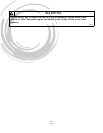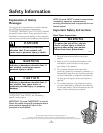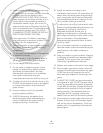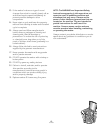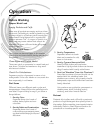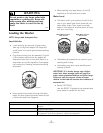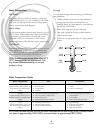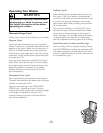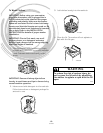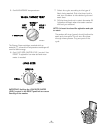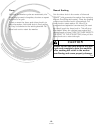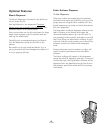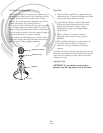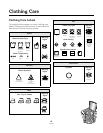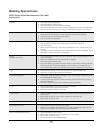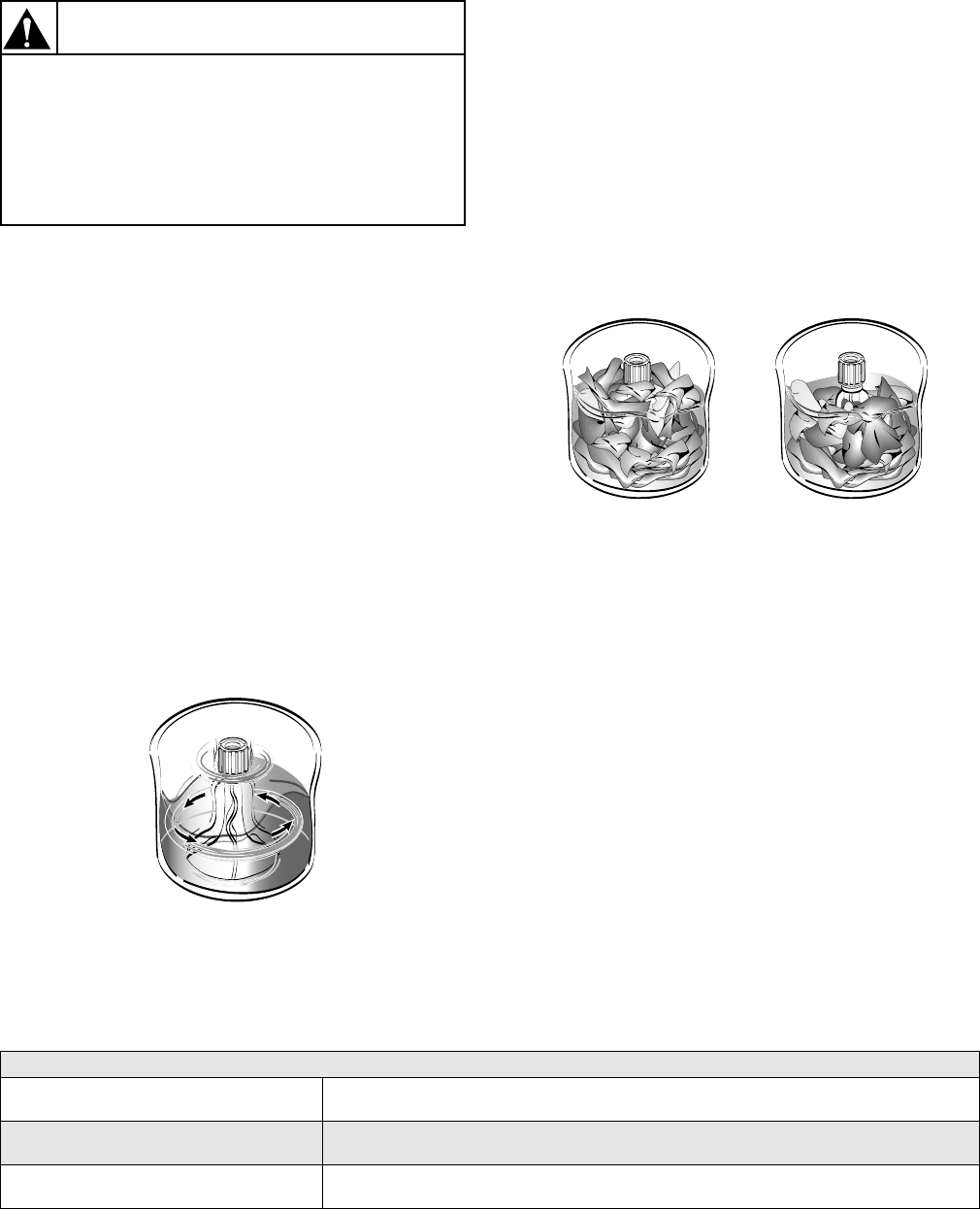
-7-
201959
Loading the Washer
NOTE: Always add detergent first.
Load Articles
• Load items by the amount of space they
take up, not by their weight. Mix large and
small items in a load to get the best washing
results.
• Drop items loosely into the washtub. The bulk
of the clothes rather than the weight will
determine load size. Do not pack items in or
wrap them around the agitator. Overloading
can cause poor cleaning, excessive wrinkling
and tears.
• Items should move freely through the wash
water for best cleaning results. Items should
rollover, sink and then reappear.
• When washing very large items, do not fill
washtub as full as with other loads.
Water Level
• The water level in your washer should fit the
size of your wash load. Small loads will use
lower water levels. There must be enough
water in the washtub to allow items to move
and turn over freely.
• Overloading the washtub can result in poor
washing and rinsing.
• Overloading may also cause wrinkling and
tearing of items.
IMPORTANT: If in doubt, always use a higher
water level. Most average loads will require a
water setting between Medium and Extra Large.
Failure to have the correct volume of water
relative to the load will increase the incidence of
excessive lint.
• Reset (OPTIONAL)
Use the RESET if agitation has started and
more water is needed for the load.
Do not wash or dry items soiled with
vegetable or cooking oils. Some oils
may remain after washing and may
cause the fabric to catch on fire by
itself.
W527
WARNING
TLW1992N
TLW1992N
TLW199
3
Wrong Water Level for
Size of Load
Right Water Level for
Size of Load
TLW1993N
Load Sizes
Small 3-4 permanent press dress shirts or 1 twin sheet, 1 pillow case or 1-2 lightweight
dresses
Medium 6-7 permanent press shirts or 2 twin sheets, 2 pillow cases or 8 standard bath
towels, 6 wash cloths
Extra Large 8-9 shirts, 5 pair polyester pants or 2 queen size sheets, 4 pillow cases,
2 nightgowns, 1 pair men’s pajamas or 1 queen size bedspread




